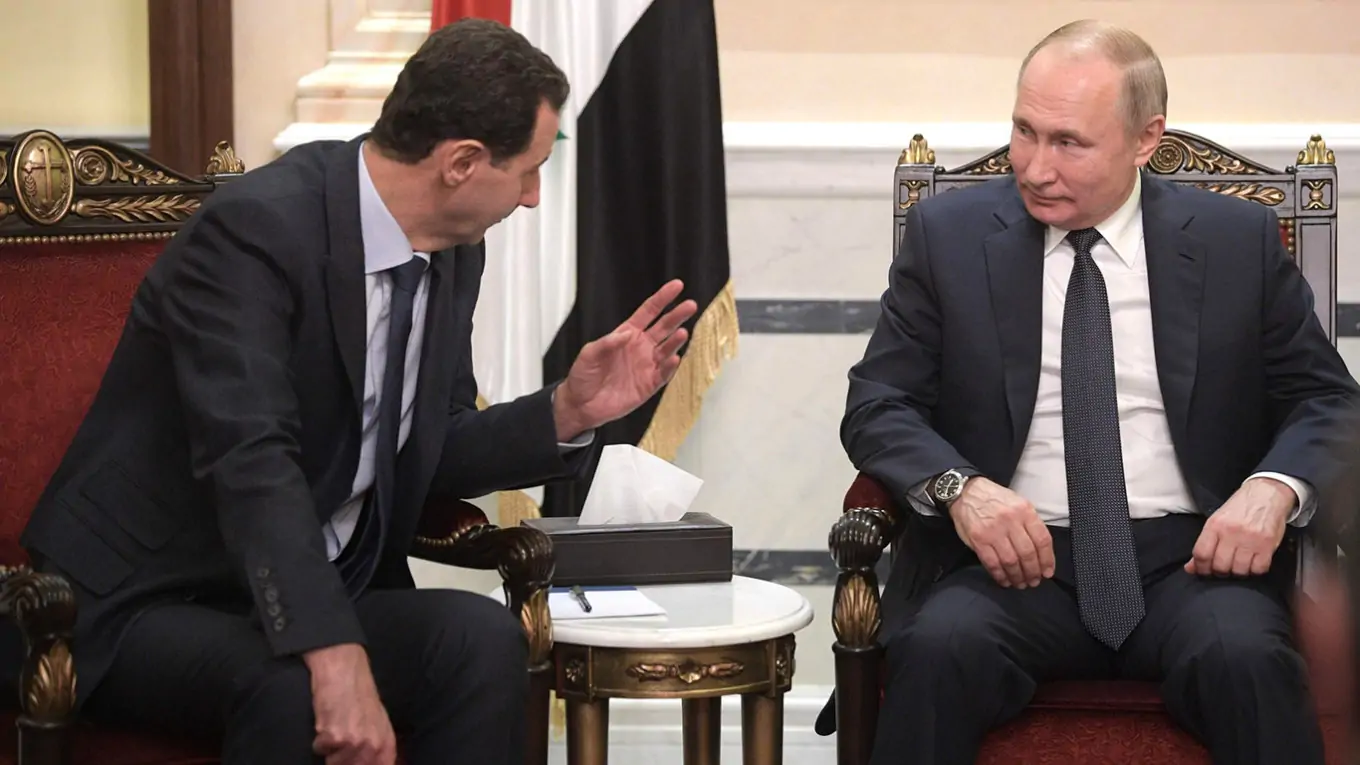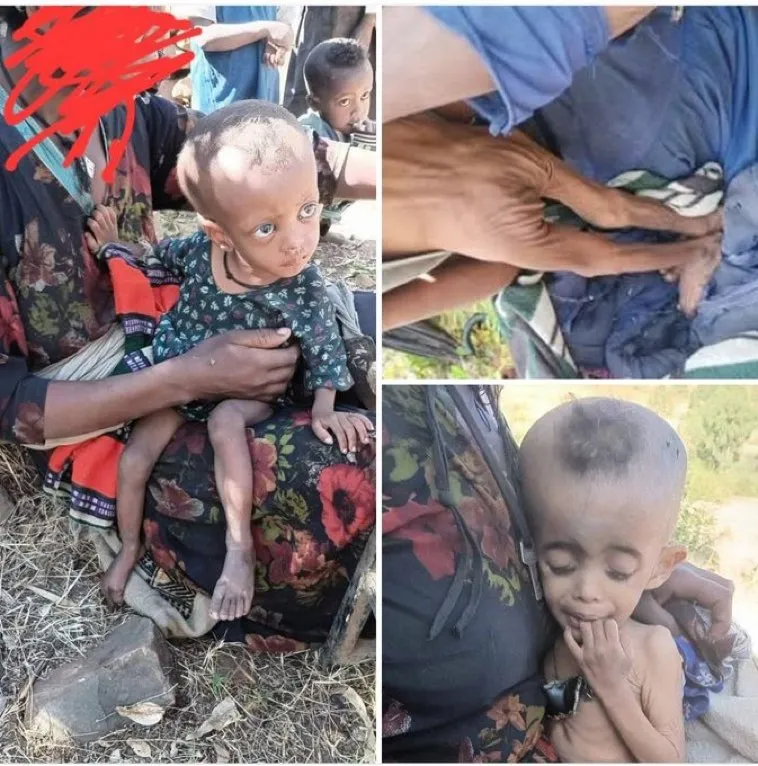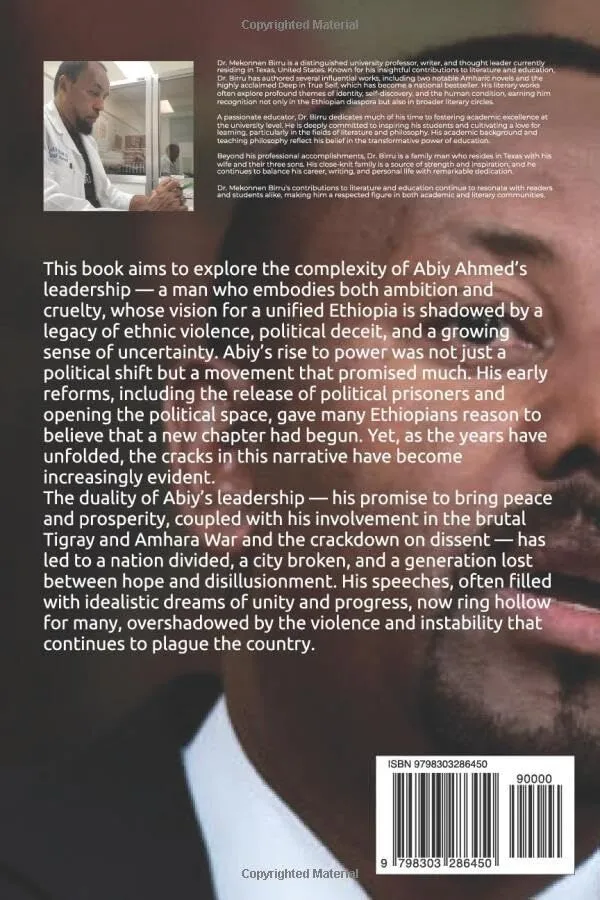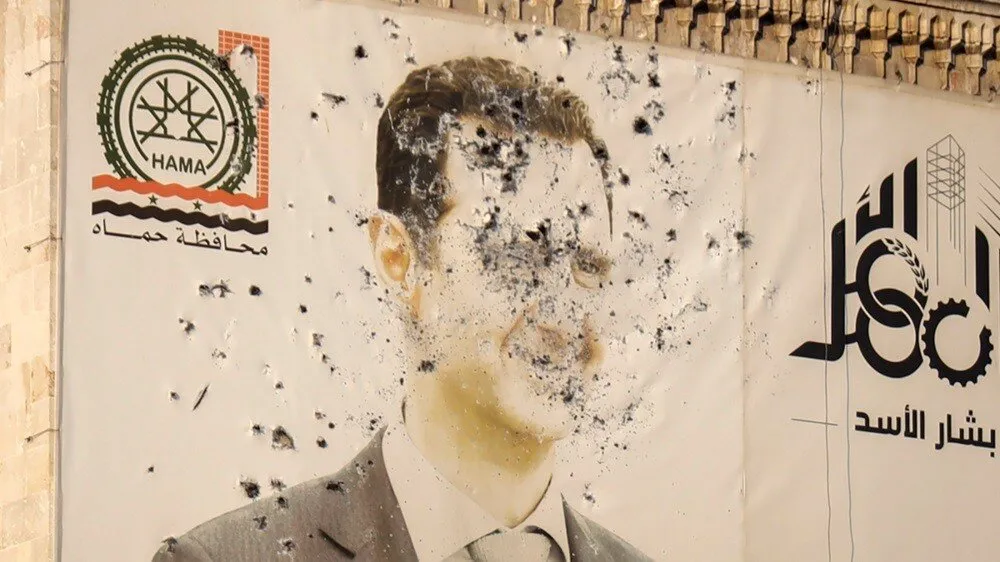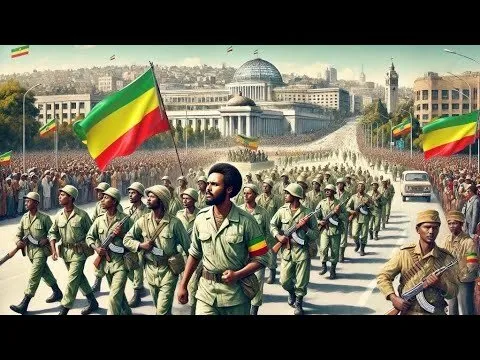The Ethiopian Ministry of Science and Higher Education has recently published history teaching material for students of higher learning institutions, entitled “Module for History of Ethiopia And the Horn for HLIS [Higher Learning Institutions Students, [hereinafter “the Module”]”. The writers of the Module are four academicians: Drs. Surafel Gelgelo, from Addis Ababa University, Deressa Debu of Jimma University, Dereje Hinew of Wallaga University, and Mr. Meseret Worku, from DabreTabor University. Though quite unknown among the broader and well-established academic historians, the authors are undeniably men (unfortunately there is no woman), with considerable educational credentials. Three of them are honored with terminal degrees in the field of history, and the two (Surafel and Deressa) have monographs published apparently by the same company, VDM Verlag Dr. Muller, one of the subsidiaries of the Omnscriptum Publishing Group, currently headquartered in Riga, Latvia. Contrary to its claim of academic publishing, VDM Verlag Dr. Muller is described as “a predatory vanity press” which publishes “works that received a passing grade”,and does “not apply the basic standards of academic publishing”.
Made up of 196 pages, the Module is divided into seven units, and an introductory chapter. The first discusses the nitty-gritty of history, including its meaning and use, sources and methods, and its geographical context. The second deals with the peopling of the region and cultural evolution. The following three units are dedicated to polities, economy, and socio-cultural processes in the successive centuries: from the early period to the end of the 13thcenturies is dealt in unit three, and those up to 16thcentury are addressed by unit four, whereas unit five discusses those from the early 16thto the end of the 18thcentury. The last two units, namely six and seven, deal with internal and external social and political dynamics and the forces at play, the first, from 1800-1941, and the second, up to 1994.
The present paper has only a very limited objective: that of making a few remarks that I consider critical and useful, highlighting mainly the most questionable aspects of the Module. As we all know, History is too important a subject to be ignored. It is a recorded memory of a society, and any society to function effectively, needs to know about its past. History is important not only to understand the society in which we presently live, and the processes by which it came about, but also to make informed judgments about the policies and personalities of those presently in power.
It is a good idea that, before embarking on the topic, I should highlight a few basic things when talking about history. History can be broadly defined as the study of the human past. Traditionally, the very distant part – before the birth of the first human civilizations and the invention of writing, a little over 5,000 years ago, is largely the domain of Anthropology. The very recent past, namely the events within the past five years or so, is handled mostly by the Political Scientists and Sociologists.
What makes history different from other humanities and social sciences, is because History deals with hard facts. If there are no facts, there is no history. History shares a common ancestry with epic poetry, novel, legend and mythology, but it is different from all of them, because its subject matter is based on documentary evidence in the form of writing, art or building work. In the past, both the subject matter of History, and the methods of ascertaining it, were quite narrow, but in the twentieth century, they have expanded tremendously. Accordingly, modern historians through DNA testing have discredited Anna Anderson’s claim that she was the grand duchess Anastasia, the daughter of Tsar Nicholas II; and with the use of carbon-14-dating technique, they were able to establish the age of the Shroud of Turin and, thus, discount the long-standing association of the fabric with Jesus’s burial cloth.
Yet History involves judgment, and it is because of the element of judgment why History is not a science, namely an academic discipline with an authoritative, unbiased statement of what really happened, THE TRUTH. Yet it is expected that a competent and objective historian should NOT take any hard fact at its face value but, like a juror at a trial, weigh the evidence to make a fair and honest a judgment as possible. The judgment should be based NOT only on the historian’s own sense of values but also on his/her sense of how the world works. Disagreements over the interpretation of the ‘hard facts’, however, does not entail one to rush to a conclusion that the event narrated never took place or the evidence is fake.
To better understand the nature of History, it is essential that we establish two important but very distinctive elements. The first is “past facts”, or “human past”. These are the people and society who lived and the events that occurred during the times under study. The second is “history” itself, which is our attempt to study, namely to investigate, explain, interpret, understand and judge these past facts. “Past facts” are eternal truths, which are fixed, unchangeable, and beyond the control of every succeeding generation. By contrast, History changes continuously from generation to generation, from individual to individual, and according to the time and place, as the values and understandings of the “past facts” change due to improved analysis, or discovery of new facts etc… Italy’s defeat at the Battle of Adwa in March 1896, for example, is a past [historical] fact, and both the fact and the date of the event are unquestionable certainties, and any contrary argument to them can be nothing but completely false as it runs against a simple and indisputable hard fact. Yet how the victory happened, why it happened, who played a major role, is a matter of debate, and the truth depends on the discovery of new documents or improved analysis of the existing ones. These are the basic facts that we should bear in mind when discussing the Module.
The Module aims to achieve somehow identical assets that most western institutions of higher learning intend to equip their freshmen and sophomores through their required core curricula courses, which stress, among other things, the attainment of the following specific objectives as their goal:
- Ensure that student possesses fundamental intellectual skills among which the most significant include critical thinking and writing;
- Broaden student’s perspective beyond that afforded by his/her major or minor, instilling in him/her sense of appreciation of the inter-relatedness, or wholesomeness of knowledge;
- Facilitate student’s search for identity and meaning, emphasizing his/her national heritage, and his/her connectedness to the broader world;
- Foster ethical behavior, civic engagement and leadership in his community, nation-state and beyond.
In the pursuit of a such student’s consciousness-raising and self-empowering efforts, it can be quite confidently stated that no other subject is as crucial as history. The writers of the Module seem to be aware of this fact, as they state that its purpose “is to help students understand a history of Ethiopia and the Horn from the ancient to 1994 as a base for shaping and bettering of the future”.
For history to attain this high objective, it should be understood and taught in all its complexities, both the pleasant and unpleasant, the heroic and the disastrous. Failure to adhere to this basic principle will result in bad history. We know that as there is good history, equally there is also bad history. Only good history will serve as a good guide to illuminate and shape students’ lives and problems. Good history takes into account as much evidence as it can and makes the most reasoned judgment as it can. The Module badly fails to meet this challenge. It can be confidently stated that it is the worst kind of History, filtered to serve only the needs of the regime in power, written by selecting only those facts that “prove” its perspective, or just to make its constituents feel good.
In fact, no academic discipline in Ethiopia had become a subject of so much ridicule, controversy, contention and propaganda as does the country’s history. Each regime that followed the monarchical rule has used and abused it for its political agenda, blaming it for the depth and breadth of the country’s social malaise, justifying its respective cruel and rapacious rule, and also to engineer a new society in its own image. Both the military dictatorship, which replaced the monarchy, known as Derg, and the present Ethiopian Peoples Revolutionary Democratic Front (hereafterEPRDF), have practically transformed the country’s population into a human guinea-pig for their contemptible ideological laboratory. Their experiments miserably failed, but they left complete mayhem behind.
Derg believed that the backwardness of Ethiopia was due to the oppressive social structure, which entailed a handful of feudal lords in cohort with their twin bedfellows, the Church and the monarchy, to abuse the masses for millennia, exploiting their land and labor. However, Derg’s attempt to build a socialist El Dorado through an exported foreign doctrine – Marxism-Leninism, was nothing but an extreme disappointment. The EPRDF, which ousted Derg, fared no better. Primarily because as a hodge-podge of individuals and groups, handpicked by the victorious Tegrean ethno-nationalist liberation front [TPLF], a guerilla band, assumingly fostered and groomed by the Eritrean Liberation Front, has no national vision of any sort beyond intense hatred and blatant discriminatory rule, both at a level perhaps quite unheard and unseen in Ethiopia’s millennial history. TPLF attributed Ethiopia’s backwardness and social malaise to the trinity of [USA] imperialism, monarchical feudalism and, what it described as, the Amhara overlord-ism, namely economic exploitation and political oppression by the Amhara, an ethnic group of TPLF’s invention for scapegoating, rationalization and sustenance of its debased political agenda. TPLF, with its surrogate, EPRDF, vowed to fight tooth and nail, the evil trio, particularly the last one. Accordingly, a constitution was drafted, followed by an administrative system that created ethnic enclaves, which apparently seemed to be useful instruments for the government’s agenda: to eliminate, hunt down, and drive back, the oppressive Amhara to their putative homeland. Yet TPLF’s political drama ended with the Front itself being unceremoniously driven back to the land of its origin by a sustained popular protest and public unrest.
What is amazing and extraordinary in all these political sagas is not only the fact of these regimes’ fanatical adherence to their elusive and ill-begotten mythology, but also their inability to learn from their predecessors’ historical mistakes. Beyond pontificating to be all-knowing, the regimes demonstrated their utter ignorance of Ethiopian history and social milieu. Whatever history they claimed they knew, happened to be a figment of their imagination, not reality.
This is the context in which the Module is written. It is apparently a part of the Nobel Peace Prize-winning Prime Minister, Doctor Abiy Ahmed’s grand vision of future Ethiopia. Abiy seems to have a good intention of bringing Ethiopia to its past historical height and glory. As many understand, in the imagination of several nations in Asia, Europe and Africa, Ethiopia’s image was that of a shining black nation, which served as a torch of freedom, a model of peaceful co-existence of disparate religions and languages, a country of proud ancient civilization. However, the vast chasm exists between Abiy’s speech and practice, and the Module typifies this abnormality. It is my conviction that its underlying interest is nothing else but the perpetuation, and therefore legitimization of, the usual false narrative by the new governing elite in the new dressing.
The major shortcoming of the Module lies in the very government’s attempt to dictate what the higher education institutions should teach. It is a universally accepted dogma that institutions of higher learning are communities of scholars and students, assembled with a mission to preserve, interpret, cultivate, advance and disseminate knowledge for its own sake rather than for any immediate political, social, or economic goal. It is these institutions, and not the government, who own the curriculum, with the power to develop, amend, change, or dispose of. By writing down, or stipulating, the course, including its content and how it should be taught by the higher learning institutions, the government is clearly infringing on the very basic and sacred governing principles of these institutions. Of course, EPRDF regime has a well-beaten track of interference with the freedom of academic institutions. Just at the beginning of its rule under Meles Zenawi’s leadership, over forty internationally renowned faculty members of the Addis Ababa University, the country’s premier institution, were sacked overnight from their position under the pretense of incompetence. The Module aims to continue that tradition, with Abiy Ahmad’s government instructing all the country’s higher learning academia the very content of the course that they ought to teach.
The government’s intention to unashamedly dictate its lopsided interpretation of Ethiopian history, as perceived by the new ruling elite, did apparently come to the fore a few months before the publication of the Module. A secret memo written to Abiy by his top legal advisor, encapsulates the new perspective. This is what the advisor states about Ethiopian history.
“What we refer to, and used as, Ethiopian history to-date, is nothing but [an epic] that commemorates the hagiography of some nations. It is an isolationist history, which does not even mention the history of most Ethiopian nationalities,but particularly the history of the Oromo. (Highlight is mine).”
The Module departs from this pathetically wrong assumption and aims at “making this course [history] as inclusive and representative as possible” by including “regional histories across the period” (p. 4). The advisor has definitely no understanding of the evolution of historical writing in the world, in general, and Ethiopia, in particular. It is an established fact that for several thousand years and until the end of the 18thcentury, written history was the political history of the upper classes, by the upper classes, and for the upper classes, which are made up of small ruling elite (stories of kings, their governments and wars), and their immediate servants, the clergy and the clerks. As the focus of history is on change, it was believed, definitely quite wrongly, that this group alone was responsible for any changes in human sphere. There was an assumption that it alone was in a position to shape the course of history through its policies, leadership, personality or creativity. So, until a few decades back, the lower classes, which is the vast majority of the human population, made only sporadic appearances on the stage of history as starving masses, or the suffering masses, or the rebellious masses, or served as tourist attractions, or as a crowd scene to highlight the visibility and presence of a high class officials in their midst. As we know it, the writing of local and ethnic history – for that matter even the history of black Africa and the black people in general, is a very recent phenomena everywhere, including the west. Ethiopia is no exception to this general global trend. Yet, contrary to the Prime Minister’s advisor’s statement, no ethnic group in Ethiopia has been the subject of so much historical interest as the Oromo ethnic groups had been. Not only that. Some of the most prominent and outstanding Ethiopian history authors themselves since the early days of the Oromo’s appearance on the stage of Ethiopian history, such as Dajach TakleSellassie, known as Tinno, and Abba TaklaIyesus Wakjira, just to mention a few, were scholars with Oromo background.
The writers repeatedly speak about the diverse histories of Ethiopia, suggesting that the country has many and disparate histories, and not one and continuous unitary history. Their apparent aim is nothing less but the deconstruction of Ethiopian identity, and constructing imaginary new social identities. We all know that social identites are essential tools to channel human capital and resources to effectively pursue a common goal, or to refrain people from killing each other. However, the various successive governments, the guerrillas as well as ethno-nationalist fronts that appeared in Ethiopian historical scene, all of them have attempted to define identities in the way that serve their own self-interest and mythologies. But historians have to be cautious of the fact that such identities are socially constructed, and not real, or permanent, or invariable.
It should also be stressed that the Ethiopia and the Ethiopian history portrayed in the Module are the ones purveyed by the contemporary discourses, promoted by authors like B. Holcomb and S. Ibsa (The Invention of Ethiopia: The Making of a Dependent Colonial State in Northeast Africa. 1990); John Sorenson (Imagining Ethiopia: Struggles for History and Identity in the Horn of Africa, and other ethno-nationalists, 1993); or ethnonationalist scholars, like Asafa Jalata, (Oromia and Ethiopia,1993), and Mohammad Hassen (The Oromo of Ethiopia: A History 1570-1860, 1990; and his articles published inOromo Studies), or the various ethnic liberation fronts [Eritrean Liberation Front (ELF), Eritrean People Liberation Front (EPLF), Tegrean Liberation Front (TLF), Oromo Liberation Front (OLF), Western Somalia Liberation Front (WSLF), just to mention the dominant ones]. As I understand, none of the above listed authors, or groups, are historians (except Mohammed Hassen). Yet, under the caveat of “interpretation” or, as in case of M. Hassen, presenting opinion or viewpoints as established “facts”, they have been successful in giving their dubious works the mantle of “History”. The Module, though written by looking at concrete “roles and interests” of those who produce these discourses, such as ethno-nationalist intellectuals, mass media, and representatives of the state, its authors invent ‘mythical facts’, relating to the so-called “the oppressed”, or “marginalized”, nationalities, to delegitimize disagreements, and valorize their own sentiments. Yet they are selective in their presentation of the facts, paying scant attention to evidence that does not fit their paradigm.
When dealing with the specifics of the Module, its close reading suggests that, as the TPLF regime was intoxicated with the hatred of the Amhara, the present ruling elites appear quite inebriated with what the authors apparently claim the Oromo’s uniquely distinctive culture, particularly as manifested in theGadasystem, and other related institutions, such asGudifechaandMogasa, just to mention the most ballyhooed ones. Overwhelmed by the “gadaeuphoria”, the authors of the Module seem to have ignored the basic tenets of historical methodology, confusing myths with facts, lies with truths, opinions with certainties, and making judgements, that are lopsided, unashamedly biased, and mystifyingly false. They write profusely about the Oromo, ignoring, or simply making passing remarks on, other nationalities. According to them, the Oromos are the largest ethnic groups not only in Ethiopia, but in Africa as well (a statement lately, but quite shamefully, echoed by the Prime Minister Abiy himself). Yet they provide no tangible evidence to back up their position beyond making such general public pronouncements.
A few centuries back, at the beginning of what historians call as “the Galla Invasion”, a European visitor wrote that,
“the Galla neither till, nor sow, nor gather anything the land produces… the spacious vales and rich plains they are masters of, only serve to pasture their cattle… They look after thy flocks, drink their milk, and eat thy flesh, which is all their food, without any bread …. They occupy the land if find any bread they do not mislike, but eat it, with a very good appetite, and yet not sow.”
However, the authors of the Module do not seem to share this view. They give the reader the impression of the Oromo as having been scientifically the most advanced. They claim not only they possessed a quite sophisticated astrological know-how that enabled them to establish the oldest calendar in the planet, but they also confidently state, based on quite opinionated source, that an Oromo man called Waqlim “have taken art of shaping phallic bowls to Zimbabwe… (p. 63)”.
For many Ethiopian and foreign scholars,gadais an ossified primordial and atavistic political institution, associated with far less complex societies. Its only historical notoriety is for both its genocides, which wiped out several ethnic groups from their homelands, and militaristic-style raids, which turned prosperous cities and villages into deserts. Merid WoldeAregay, a leading scholar on the Oromo migration, in his magisterial thesis,Southern Ethiopia and the Christian Kingdom, 1508-1708 with Special Reference to the Galla Migration and their Consequences, 1971),states that “each newlubainaugurated its eighth-year term by launching offensives for new conquests… Those who suffered most were the Muslim towns and cities (p. 334); “The Galla fell on every town and village and destroyed over 100 towns (p. 348)”. C. F. Rey, writing about the sixteenth century’s Gada-based expansionist wars, confirms that the method of warfare “was cruel, even for that age, and it was they [the Oromos] who introduced the horrible practices of mutilating the dead, even the wounded and prisoners (C. F. Rey, “The Arussi and the Other Galla of Abyssinia,”Journal of the Royal African Society, Vol.23, No. 90 [1924], p. 86).
As regards the much ballyhooedMogasa, Merid has this to say:
“the Galla maintained the distinction between themselves and the subjugated peoples by adopting the social system that fitted their needs,they made sure that the strangers were kept out of the age-sets….” In the eyes of “the peasants, the Gallas were not mere intruders, but aliens and enemies, who had caused much damage and upset their sedentary way of life (p. 417)”.
Contrary to these undeniable historical facts, the writers, however, present a rosy picture of the democratic Oromo movement. They are completely silent about thegadagenocides, the wholesale devastation of cities and villages, unwanted massacre of their entire populations, and destruction of civilizations. They are, however, critical of those who were at the receiving end of these calamities, or made gigantic efforts and paid enormous price to rebuild the country and restore its former territories.
In fact, a careful reader of the Module will notice that Ethiopian history is portrayed as a continuous and sustained struggle between power-hungry northerners (whom the authors call with so many confusing and confounding terms, such as “The Abyssinians”, or “The Christian Kingdom”, or “The Ethiopian Empire”, just to mention a few), who are bent in dominating others, on one side, and peace-loving Muslim sultanates, or the Oromos, on the other, in the medieval ages. And again, between the Shawans and their northern Christian allies, as represented by Emperor Menilek and his Oromo collaborators, all seen as the new conquerors and colonialists, on one hand, and the conquered but inherently democratic and peace-loving Oromos and other minority ethnic groups, on the other. Thus, Menilek’s priceless unification effort is presented as brutal colonial conquest which, in some extreme instances, as in Anole, a place in Arsi, involved the use of biological warfare, such as smallpox, accompanied by breast mutilation and limb amputation and castration (p. 136).
Again, the authors have offered no shred of evidence in support of the case beyond their audacious and, definitely, fictitious claim. In a war situation, anything may happen and there is nothing to be amazed by if something goes out of one’s expectation. Yet the veracity of what the authors call “the Anole Incident” is quite questionable not only there is no mention of any sort by any of the contemporaries, both indigenous and foreign eye-witnesses and authors, who wrote about Arsi’s ferocious resistance but, most significantly, their rendition of the event militates against Emperor Menilek’s very character and policy. Their source is definitely Abbas Haj Gnamo, a political scientist (therefore, not a groomed historian) and a well-known ethnonationalist who, in his monograph,Conquest and Resistance in Ethiopian Empire, 1880-1974: The Case of Arsi Oromo, based on his study of the oral tradition, in his BA thesis, states that Menelik II and his uncle Darge,
“… a year after shattering defeat at Azule on September 6,1886, the Arsi strong men and women were assembled under the pretext of concluding peace. All the men and women present, whose exact number was unknown, perhaps more than a thousand people were mutilated; their right hands and breasts were cut off. As a further form of humiliation, fear and terror the mutilated breasts and hands were tied around the neck of the victims who were sent back to home (p. 158)”
Gnamo fails to provide any tangible evidence that supports such an important statement beyond his oral tradition that cannot stand up a close historical scrutiny. What is more, he, like the writers of the Module, is deliberately silent about the “sharp and ferocious tribal wars among the various Arsi tribesmen” that devastated their country and the surrounding territories and, as Wellby, the British army officer in 1889, noted, how that they “lost all their endemic inter-tribal strife” with Arsi’s reincorporation into Ethiopia, for peace reigned throughout” their lands and “the surrounding areas”. (Harold Marcus, “The Corruption of Ethiopian History,”Proceeding of the Six Michigan State University Conference on North East Africa [1992], p. 276)”. It is clear that both Gnamo and the authors of the Module are using the trappings of scholarship to promote and serve the purpose of their partisan agenda, demonizing Ethiopian history and identity, but reconstructing and lionizing the Oromo history and mythology.
Beyond their attack of the ‘Abyssinian Empire’, the writers reserve the vengeance of their deleterious pen to the Ethiopian Orthodox Church. They assert that the Church followed the footsteps of the conquering northern ‘Christian Kingdom’. The conquered people were converted by force and, with the monopolization of burial places by the Church, total surrender became their fate (39). From any decent historian perspective, this is certainly the most outrageous and shameful ahistorical statement to make. By contrast, they assert that Islam spread from the Horn’s coast peacefully and gradually among the predominantly pastoral communities of the interior, largely through the agency of preachers and merchants (p. 40). Again, according to them, many communities, especially in Arsi, “adopted Islamen mass” in protest against the “imposed Ethiopian Orthodox Church” (41). To establish that both these statements are quite false, we should look no further than the actions of the Imam Ahmad Ibn-Ibrahim al-Ghazi (1506-1543), popularly known as Gragn, or The Left-handed, and several of the Oromo principalities that mushroomed in the Gibe region in the 19th century. Both used the sword and terror in the form of force and jihad in their Islamization campaign, destroying and enslaving those who disobeyed, or, were reluctant to convert, whereas no hard facts exist, supporting, particularly in the south, the forceful imposition of the Ethiopian Orthodox Church’s faith by the royal fiat.
The Module ends with a perfunctory review, just in a single paragraph, the EPRDF’s coming to, and consolidation of, power, including its over twenty-seven years’ rule. Reflecting the government’s propaganda, the authors describe the notorious ethnic enclaves that the TPLF invented as based “on identity, language, settlement patterns andpeoples consent”; and the non-sensical federal arrangement of the language-based states is presented as a wise creation intended to “rectifypast injusticesand imbalances perpetuated by anunrepresentativestate through the decentralization of power … by accommodating the country’s various ethno-linguistic groups.(highlight is mine)” (p.194).
Definitely, this conclusion is the most fitting summary that clearly indicates the true character and significance of the Module: a government ploy to present to the young students as normal and as a true reflection of the people’s will not only a discriminatory and destructive political order, characterized by the plunder and robbery of the country’s resources, but also one of the most hated regimes, presently tottering due to the rising popular discontent and public uprising.
With these few pointed observations, I halt my remarks. However, I feel obliged to stress the Modules’ absolute failure to provide additional reading material for students to further their knowledge and curiosity beyond the Module/textbook itself; the absurdity of monolithic assessment method (only essay questions are provided); a very cumbersome cacophony of meaningless names and words that may do nothing good but crush to the ground the student in agony, and destroy his/her enthusiasm for any effective learning. The Module is littered with grammatical inaccuracies, typographical oversights and carelessness, syntactical errors, and extremely poor choice of English words, all of them massive and discouraging any dedicated reader to take both the authors and the Module seriously.
As regards the use of a foreign language for instructional purposes, I would like to throw out a few words. One of the mechanisms the former western colonial powers continue to maintain their dominance on their former black African colonies is the use of their languages as the official means of communication. Luckily, Adwa has freed Ethiopians from a such mental degradation and cultural enslavement; yet our educational institutions continue to use European rather than Ethiopia’s own language, definitely a humiliating slap in the face of Adwa and those who fought and sacrificed their lives for the country’s uncompromising freedom and independence. Therefore, I find extremely hard to grasp the reason for choosing a foreign means of communication in a land that has a longstanding national language and proud literary tradition that predate most of those in the west. It is stated that statesmen, who are normally considered as being far-sighted and noble, care about the next generations, whereas politicians, often selfish, imbecile, unintelligent and vainglorious, look only for their next election. Instead of dictating the curriculum to higher education institutions, the government should work out a realistic plan and rewarding mechanisms to liberate Ethiopia’s educational institutions from the yoke of foreign linguistic dominance. In doing so, any enlightened government would save thousands, if not millions, of the country’s precious students. There are firm recurrent statements since the imperial government time that many students fail their exams, or are discouraged from furthering their education, because of the foreign language hardship.
Finally, unless there is some covert and ulterior motive, perhaps intended to appease certain quarters or a few self-serving and narrow ethno-nationalists, who find even the mere mention of the name Ethiopia hard to swallow, the term “AndThe Horn”in the title of the Module, is quite misnomer, not to say superfluous, as there is no relevant discussion concerning other surrounding Horn states beyond a few uninteresting remarks.
From an honest historian’s perspective, the Module is nothing, but the regime’s hidden propaganda parading as an academic history course. From the start to finish, it is an embarrassing document, and any serious historian will be faced with no other option but to throw it out – lock, stock and barrel. The blind partisanship and biases, the very many glaring errors, omissions and false statements stand to demonstrate that the writers weren’t up to par with the task they have been assigned. Not only were they unqualified and amateurish, but also, as Getatchew Haile, the leading scholar in the field of Ethiopian studies, pointed out in his scathing criticism of the Module, they were plagiarists as well (Getatchew Haile,Module for History of Ethiopia and the Horn for Higher Learnings).
The design and instruction of an academic course is the preserve of higher learning institutions. It is for them, and not the government, to take the responsibility to develop their students’ curriculum freely and seriously. The government is tasked with providing both the necessary infrustructure in terms of buildings and amenities, a safe and conducive environment that instill, nourish, sustain and reinforce the pursuit of free inquiry and an independent learning. But it should keep its distance from any form of intrusion in the institutions’ academic matters

 Dr Haile Larebo
Dr Haile Larebo
